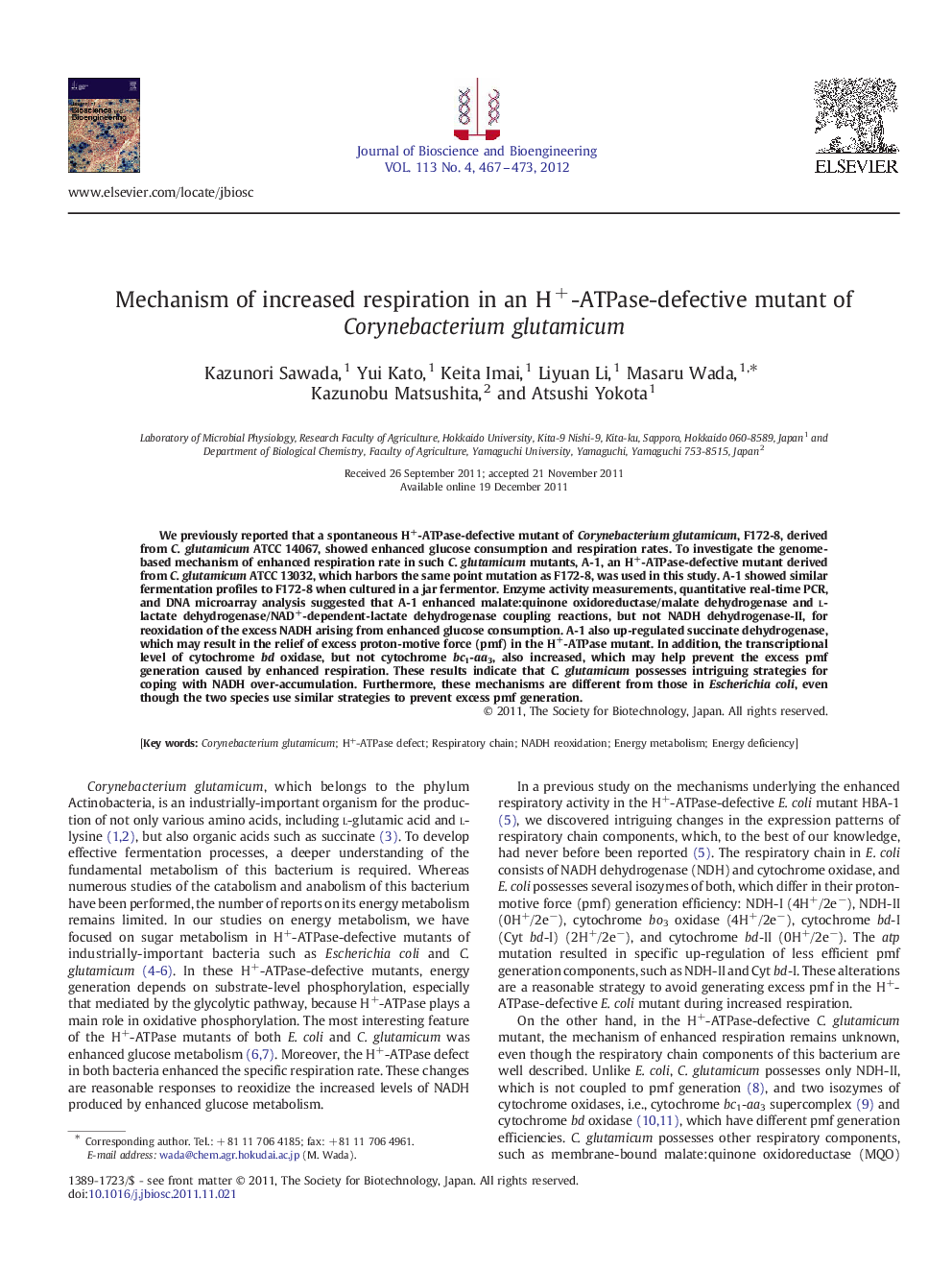| Article ID | Journal | Published Year | Pages | File Type |
|---|---|---|---|---|
| 21308 | Journal of Bioscience and Bioengineering | 2012 | 7 Pages |
We previously reported that a spontaneous H+-ATPase-defective mutant of Corynebacterium glutamicum, F172-8, derived from C. glutamicum ATCC 14067, showed enhanced glucose consumption and respiration rates. To investigate the genome-based mechanism of enhanced respiration rate in such C. glutamicum mutants, A-1, an H+-ATPase-defective mutant derived from C. glutamicum ATCC 13032, which harbors the same point mutation as F172-8, was used in this study. A-1 showed similar fermentation profiles to F172-8 when cultured in a jar fermentor. Enzyme activity measurements, quantitative real-time PCR, and DNA microarray analysis suggested that A-1 enhanced malate:quinone oxidoreductase/malate dehydrogenase and l-lactate dehydrogenase/NAD+-dependent-lactate dehydrogenase coupling reactions, but not NADH dehydrogenase-II, for reoxidation of the excess NADH arising from enhanced glucose consumption. A-1 also up-regulated succinate dehydrogenase, which may result in the relief of excess proton-motive force (pmf) in the H+-ATPase mutant. In addition, the transcriptional level of cytochrome bd oxidase, but not cytochrome bc1-aa3, also increased, which may help prevent the excess pmf generation caused by enhanced respiration. These results indicate that C. glutamicum possesses intriguing strategies for coping with NADH over-accumulation. Furthermore, these mechanisms are different from those in Escherichia coli, even though the two species use similar strategies to prevent excess pmf generation.
